Audi Q3 vs Hyundai IONIQ 5 – Differences & prices compared
Two cars, one duel: Audi Q3 meets Hyundai IONIQ 5.
Which one wins in performance, efficiency and value for money? Find out now!
Costs and Efficiency:
When it comes to price and running costs, the biggest differences usually appear. This is often where you see which car fits your budget better in the long run.
Audi Q3 has a hardly perceptible advantage in terms of price – it starts at 38200 £, while the Hyundai IONIQ 5 costs 38500 £. That’s a price difference of around 257 £.
As for range, the Hyundai IONIQ 5 performs significantly better – achieving up to 570 km, about 451 km more than the Audi Q3.
Engine and Performance:
Power, torque and acceleration say a lot about how a car feels on the road. This is where you see which model delivers more driving dynamics.
When it comes to engine power, the Hyundai IONIQ 5 has a clearly edge – offering 650 HP compared to 272 HP. That’s roughly 378 HP more horsepower.
In acceleration from 0 to 100 km/h, the Hyundai IONIQ 5 is convincingly quicker – completing the sprint in 3.50 s, while the Audi Q3 takes 5.70 s. That’s about 2.20 s faster.
In terms of top speed, the Hyundai IONIQ 5 performs barely noticeable better – reaching 260 km/h, while the Audi Q3 tops out at 240 km/h. The difference is around 20 km/h.
There’s also a difference in torque: Hyundai IONIQ 5 pulls decisively stronger with 770 Nm compared to 400 Nm. That’s about 370 Nm difference.
Space and Everyday Use:
Whether family car or daily driver – which one offers more room, flexibility and comfort?
Both vehicles offer seating for 5 people.
In curb weight, Audi Q3 is somewhat lighter – 1635 kg compared to 1955 kg. The difference is around 320 kg.
In terms of boot space, the Hyundai IONIQ 5 offers minimal more room – 520 L compared to 488 L. That’s a difference of about 32 L.
In maximum load capacity, the Hyundai IONIQ 5 performs a bit better – up to 1580 L, which is about 194 L more than the Audi Q3.
When it comes to payload, Audi Q3 hardly perceptible takes the win – 535 kg compared to 530 kg. That’s a difference of about 5 kg.
Who wins the race?
The Hyundai IONIQ 5 proves to be is largely superior and therefore becomes our DriveDuel Champion!
Hyundai IONIQ 5 is the better all-rounder in this comparison.
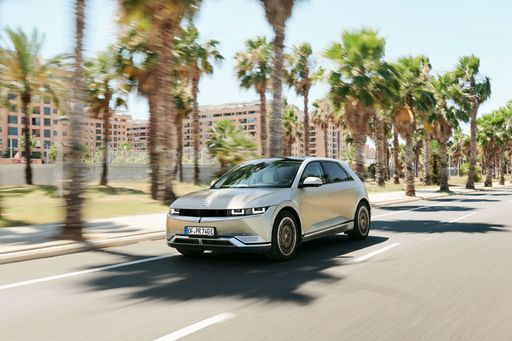
Hyundai IONIQ 5
Audi Q3
The Audi Q3 seamlessly blends practicality with luxury, making it an ideal choice for urban dwellers and adventure seekers alike. With its striking design and sophisticated interior, the Q3 offers a premium driving experience that caters to both comfort and style. As a compact SUV, it effortlessly navigates through city streets while providing ample space for passengers and cargo.
details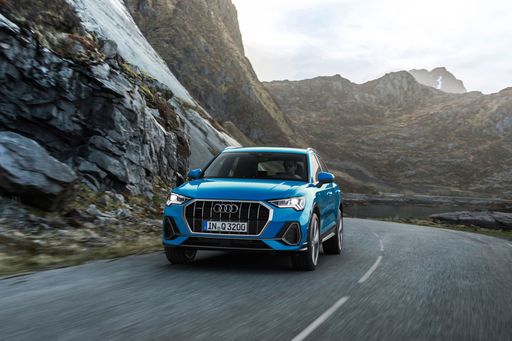 @ audi-mediacenter.com
@ audi-mediacenter.com
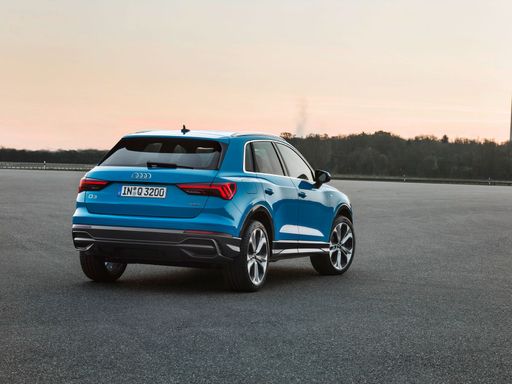 @ audi-mediacenter.com
@ audi-mediacenter.com
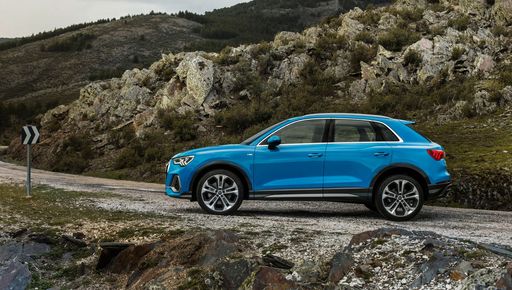 @ audi-mediacenter.com
@ audi-mediacenter.com
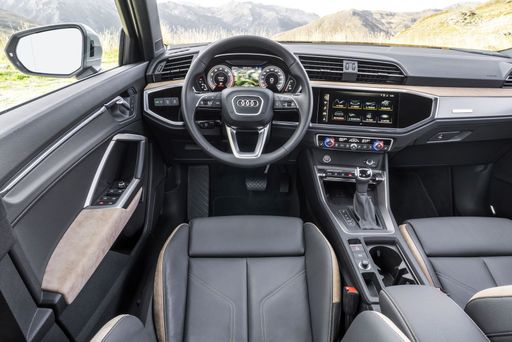 @ audi-mediacenter.com
@ audi-mediacenter.com
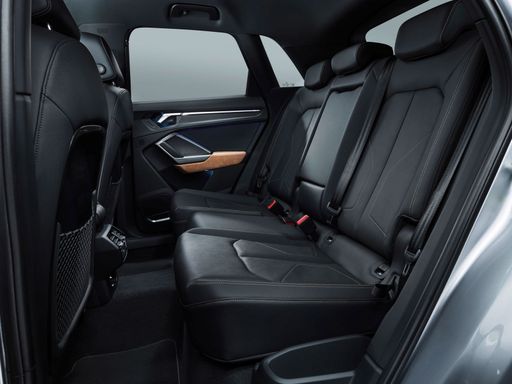 @ audi-mediacenter.com
@ audi-mediacenter.com
Hyundai IONIQ 5
The Hyundai IONIQ 5 showcases a bold and futuristic design that captures attention with its striking facade and sharp lines. This electric vehicle offers an impressive blend of performance and efficiency, making it a compelling choice for environmentally conscious drivers. Inside, the spacious and tech-forward interior provides a comfortable and engaging driving experience for both driver and passengers.
details @ hyundai.news
@ hyundai.news
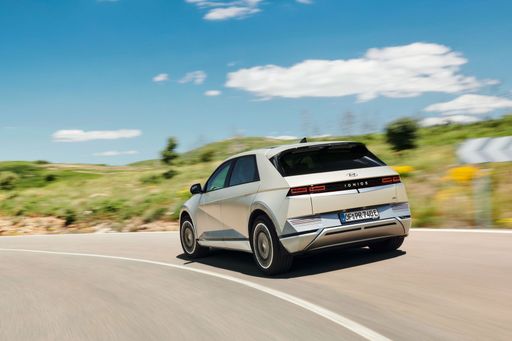 @ hyundai.news
@ hyundai.news
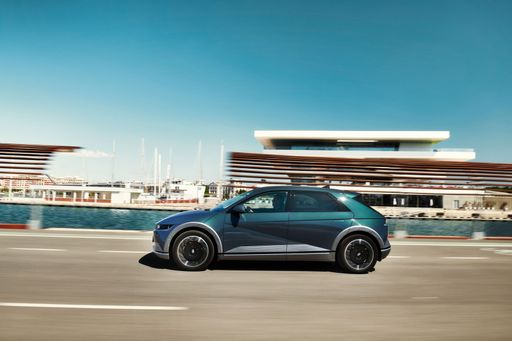 @ hyundai.news
@ hyundai.news
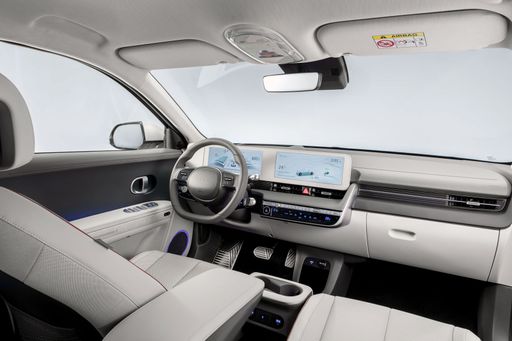 @ hyundai.news
@ hyundai.news
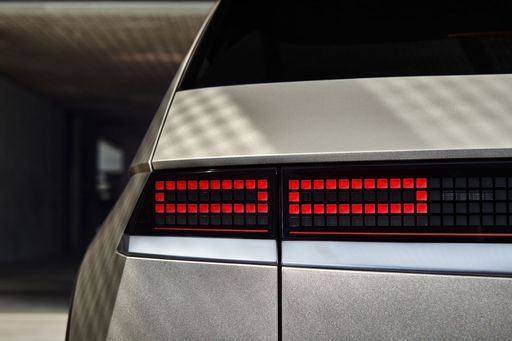 @ hyundai.news
@ hyundai.news

|

|
|
|
|
Costs and Consumption |
|
|---|---|
|
Price
38200 - 52900 £
|
Price
38500 - 64200 £
|
|
Consumption L/100km
1.7 - 8.6 L
|
Consumption L/100km
-
|
|
Consumption kWh/100km
-
|
Consumption kWh/100km
15.6 - 21.2 kWh
|
|
Electric Range
118 - 119 km
|
Electric Range
440 - 570 km
|
|
Battery Capacity
19.70 kWh
|
Battery Capacity
63 - 84 kWh
|
|
co2
39 - 195 g/km
|
co2
0 g/km
|
|
Fuel tank capacity
45 - 60 L
|
Fuel tank capacity
-
|
Dimensions and Body |
|
|---|---|
|
Body Type
SUV
|
Body Type
SUV
|
|
Seats
5
|
Seats
5
|
|
Doors
5
|
Doors
5
|
|
Curb weight
1635 - 1900 kg
|
Curb weight
1955 - 2275 kg
|
|
Trunk capacity
375 - 488 L
|
Trunk capacity
480 - 520 L
|
|
Length
4531 mm
|
Length
4655 - 4715 mm
|
|
Width
1859 mm
|
Width
1890 - 1940 mm
|
|
Height
1559 - 1601 mm
|
Height
1585 - 1605 mm
|
|
Max trunk capacity
1196 - 1386 L
|
Max trunk capacity
1540 - 1580 L
|
|
Payload
505 - 535 kg
|
Payload
385 - 530 kg
|
Engine and Performance |
|
|---|---|
|
Engine Type
Petrol MHEV, Petrol, Plugin Hybrid, Diesel
|
Engine Type
Electric
|
|
Transmission
Automatic
|
Transmission
Automatic
|
|
Transmission Detail
Dual-Clutch Automatic
|
Transmission Detail
Reduction Gearbox
|
|
Drive Type
Front-Wheel Drive, All-Wheel Drive
|
Drive Type
Rear-Wheel Drive, All-Wheel Drive
|
|
Power HP
150 - 272 HP
|
Power HP
170 - 650 HP
|
|
Acceleration 0-100km/h
5.7 - 9.2 s
|
Acceleration 0-100km/h
3.5 - 8.5 s
|
|
Max Speed
208 - 240 km/h
|
Max Speed
185 - 260 km/h
|
|
Torque
250 - 400 Nm
|
Torque
350 - 770 Nm
|
|
Number of Cylinders
4
|
Number of Cylinders
-
|
|
Power kW
110 - 200 kW
|
Power kW
125 - 478 kW
|
|
Engine capacity
1498 - 1984 cm3
|
Engine capacity
-
|
General |
|
|---|---|
|
Model Year
2025
|
Model Year
2024
|
|
CO2 Efficiency Class
E, G, B
|
CO2 Efficiency Class
A
|
|
Brand
Audi
|
Brand
Hyundai
|
Is the Audi Q3 offered with different drivetrains?
The Audi Q3 is available as Front-Wheel Drive or All-Wheel Drive.
The prices and data displayed are estimates based on German list prices and may vary by country. This information is not legally binding.
